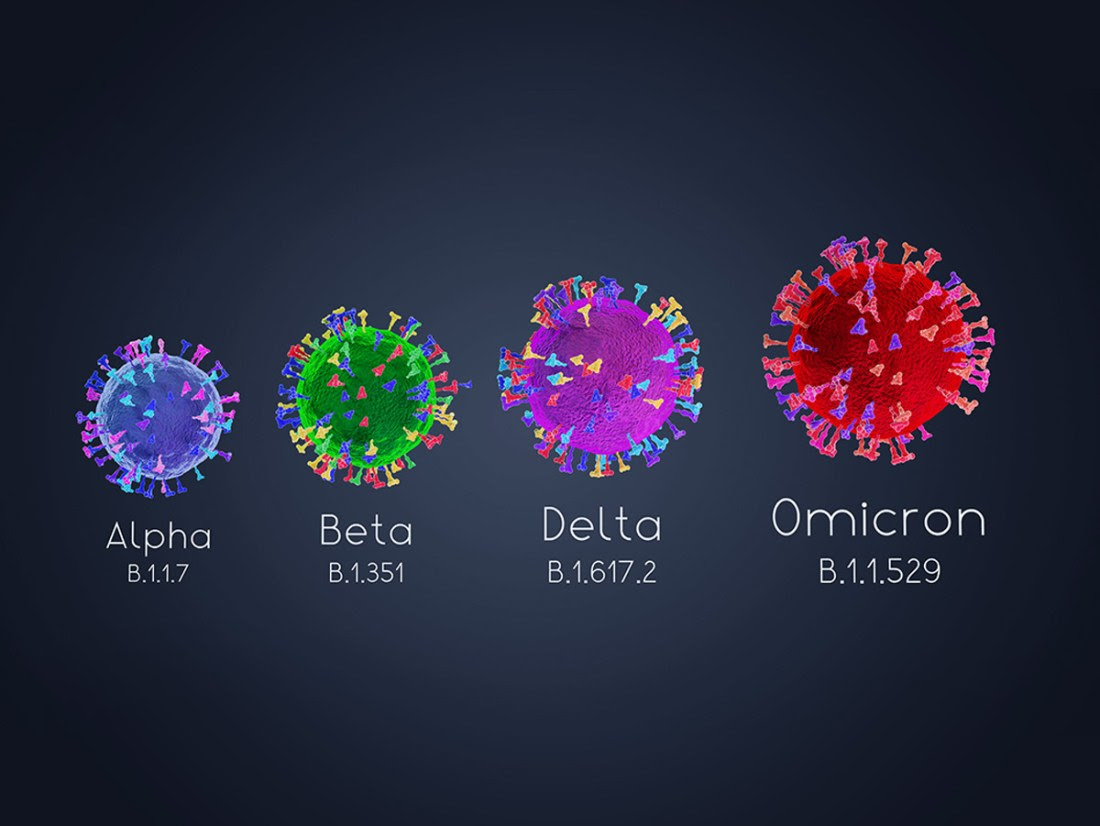After its worldwide discovery in December 2021, Omicron rapidly dislodged the Delta variant causing most infections. The Omicron variants (BA.1, BA.2, BA.3, BA.4, BA.5) and their sublineages still knock down our immune defences.
According to data from the Institut national de santé Publique du Québec (INSPQ) dated June 26, these variants are responsible for almost all current infections. As for re-infections, it is impossible to have a reliable picture since the last status report dates back to January 1, 2022, when Omicron was progressing in the population. The INSPQ informs that “the compilation is currently in progress, and it should take a few more weeks” before having a newly updated status of reinfections.
If you have already had COVID-19, what makes you vulnerable to Omicron? Scientists in Geneva, Switzerland, have examined the virus’s interaction and antibodies. Since the beginning of the pandemic, this team has collected antibodies from 120 infected (or double-vaccinated) patients and virus particles from several SARS-CoV-2 variants. The goal was to understand whether antibodies generated by a first infection or vaccination can neutralize a subsequent infection.
“We found that the antibodies produced during a first infection with the Alpha or Beta variant conferred good immune protection against the other variants, but less so for Omicron,” notes Isabella Eckerle, professor and virologist at the University of Geneva. She and her team conducted serum neutralization tests. These tests determine the concentration of antibodies needed to neutralize the virus particles. The results appear in Nature Communications.
“Omicron is very good at evading existing immunity,” adds the researcher, who is also head of the Center for Emerging Viral Diseases at the University Hospital of Geneva and the University of Geneva Medical School (UNIGE-HUG). According to the results obtained by the Swiss team, the neutralization capacity is slightly better in vaccinated people than in people who have only had natural infection.
The researcher emphasizes that our antibodies are not at fault; Omicron uses tricks to evade the immune system and can evolve very quickly. “We see that each variant of the emerging virus has mutations that can evade existing immunity.” Isabella Eckerle draws a parallel to the flu virus, which mutates every year as it overcomes immunity acquired in the past. The problem with SARS-CoV-2 is that it mutates every 3 to 6 months.
“Other scientists thought that after Delta, the virus had exhausted all its tricks and could not become more contagious. But we see that it is still possible with Omicron,” the researcher points out.
This is also the finding of researchers in South Africa who suspect more than 100,000 cases of reinfections in a pool of 2 million people. Their study published in Science observed that reinfections were relatively low during the waves caused by Beta and Delta. But the picture is quite different with Omicron, which can evade immune defences despite the previous infection.
At the time of publication of Isabella Eckerle’s study, variants like BA.2 and BA.5 were not yet circulating in the population. Her team continues to collect antibodies from infected patients to make the same neutralization observations. However, unlike the first waves, she points out that it is much more challenging to get a picture of the infection in an individual. Were the antibodies found in a person generated by vaccination, one or two conditions, or all of these at once? “Today, we can’t be sure how many times a person has been infected. It will be much more complicated to do those kinds of studies because we don’t know how people were exposed to the virus.”
While the summer seemed to represent a lull in infections, BA.5 could shake things up. In Quebec, BA.5 and its subtypes accounted for 42.6% of positive cases as of June 26. In Australia, which has been struggling with infections caused by the BA.4 and BA.5 variants, public health officials are concerned about high reinfection rates in people who have been vaccinated or had the disease. According to the Australian Health Protection Principal Committee, reinfections “can occur as early as 28 days after recovery from a previous infection with COVID-19.” Several cases of reinfections have been observed even in people who have had Omicron before. Reassuringly, however, vaccinated individuals remain protected against complications from COVID-19.
The rise in infections worldwide can be explained by the virus adapting to mutations that overwhelm the immune system and by lax health measures. According to an epidemiologist interviewed by Nature, “outside of Asia, most countries are not doing much about SARS-CoV-2. The increase and eventual decrease in BA.4 and BA.5 cases will be almost entirely due to population immunity.” So far, preliminary data indicate that BA.5 does not cause more hospitalizations than other variants.
What also worries Isabelle Eckler is the possible arrival of an intense flu wave. That’s what’s happening in Australia right now. “If we have to deal with a wave of COVID-19 and influenza on top of that, it could be a problem in a hospital setting where there is a lot of understaffing.”
In the vaccine race, Pfizer-BioNTech and Moderna have come to the finish line with their RNA vaccines. The U.S. company’s two-dose Novovax vaccine (known as Nuvaxovid in Canada and Adjuvanted in the U.S.) can be given to people over 18 who have not yet been vaccinated.
Unlike RNA vaccines, Novovax is a protein subunit vaccine. It works similarly to flu vaccines, for example, where virus fragments are used to trigger an immune response.
Preliminary data on the effectiveness of the Novovax vaccine are encouraging, even against the BA.5 variant. Wayne A. Marasco, an FDA advisor and professor of virology and cancer immunology at the Dana-Farber Cancer Institute, told the Washington Post that he wonders if “we’re not seeing some limitation of RNA vaccines, which don’t seem to have as much protection.”



Comment here